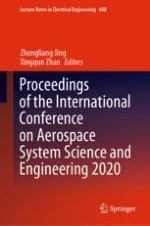2021 | OriginalPaper | Buchkapitel
Mathematical Modeling of an Environment Control System in the Framework of Creating a Comprehensive Mathematical Model of Aircraft On-Board Systems
verfasst von : R. S. Savelev, K. S. Napreenko, A. V. Lamtyugina
Erschienen in: Proceedings of the International Conference on Aerospace System Science and Engineering 2020
Verlag: Springer Singapore
Aktivieren Sie unsere intelligente Suche, um passende Fachinhalte oder Patente zu finden.
Wählen Sie Textabschnitte aus um mit Künstlicher Intelligenz passenden Patente zu finden. powered by
Markieren Sie Textabschnitte, um KI-gestützt weitere passende Inhalte zu finden. powered by
